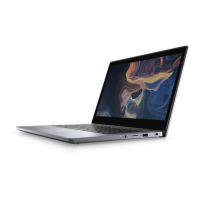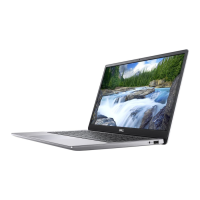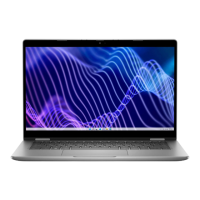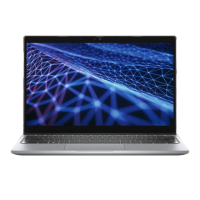9. If self-heal recovers the failure, update the system with the latest BIOS, and perform ePSA to ensure proper functionality of
the system.
NOTE:
● During installation or removal of any hardware, always ensure all data is backed up properly.
● For instructions on how to remove or replace parts, visit the Assembly Disassembly.
● Before beginning to work on the computer, follow the Safety Instruction.
Supported Latitude Models
NOTE:
● Before replacing the system board, perform Self-Heal as a mandatory step.
● Latitude Self-Heal can be avoided when complete system tear-down is required to access the coin-cell battery.
● For the Latitude E7 Series (XX70), BIOS Recovery 2.0 should be performed as the primary step.
● In order to reduce troubleshooting time associated with Self-Heal, there is no mandatory requirement to reassemble the
system. Technicians can initiate Self-Heal even with the system board exposed.
● Do not touch any of the exposed components or the system board to avoid shorting and static discharge.
● If Self-Heal is unable to recover the failure, proceed with replacing the system board.
NOTE:
Front-line Agent Action: Front-line agents must encourage the customer to perform this step before isolating the issue
as a motherboard failure. If the customer is not comfortable performing the Self-Heal procedure, then please document the
dispatch being created in 5GL. Advise the onsite engineers to perform the Self-Heal procedure as one of the mandatory
initial steps. Advise them that if the Self-Heal procedure is unsuccessful, to continue with the regular troubleshooting
before part replacement.
Onsite Engineer Action: The Latitude Self-Heal procedure has to be a mandatory initial step. If the Self-Heal procedure
is unsuccessful, continue with the regular troubleshooting before part replacement. Document Self-Heal results in the call
closure log (Self-Heal Pass or Fail).
M-BIST
M-BIST (Built In Self-Test) diagnostics tool, featuring improved accuracy in system board failures.
NOTE: M-BIST can be manually initiated before POST (Power On Self Test).
How to run M-BIST
NOTE: M-BIST must be initiated on the system from a power-off state either connected to AC power or with battery only.
1. Press and hold both the M key on the keyboard and the power button to initiate M-BIST.
2. With both the M key and the power button held down, the battery indicator LED may exhibit two states:
a. OFF: No fault detected with the system board
b. AMBER: Indicates a problem with the system board
LCD Built-in Self Test (BIST)
Dell laptops have a built-in diagnostic tool that helps you determine if the screen abnormality you are experiencing is an inherent
problem with the LCD (screen) of the Dell laptop or with the video card (GPU) and PC settings.
When you notice screen abnormalities like flickering, distortion, clarity issues, fuzzy or blurry image, horizontal or vertical lines,
color fade etc., it is always a good practice to isolate the LCD (screen) by running the Built-In Self Test (BIST).
Troubleshooting
105
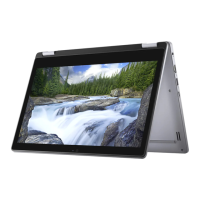
